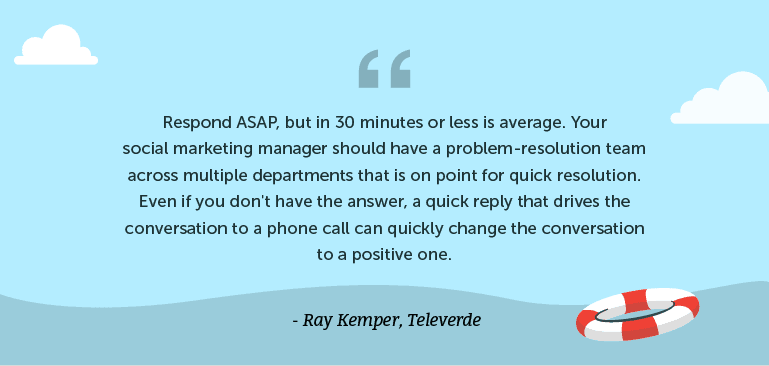How to Manage a Social Media Crisis Without Losing Your Mind
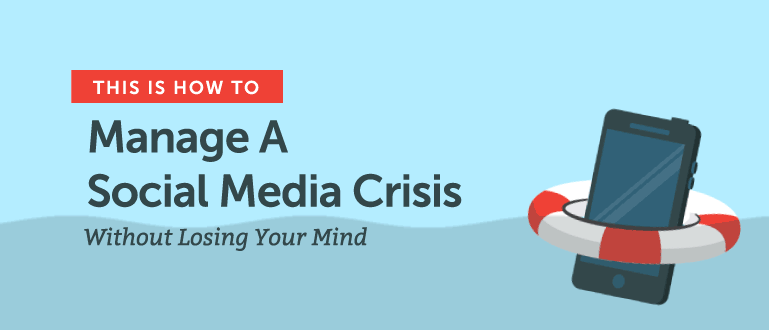 A social media crisis is something most brands will encounter at some point in time. Some will be more serious than others, but a solid social media crisis plan can help you better manage the situation and mitigate damages.
Maybe an intern accidentally posted on the company account (instead of a personal profile). Or, a major mistake (understandable or not) might spark online outrage amongst your audience.
Whatever the case, marketers and social media managers need to be prepared, which is why every company should have a social media crisis management plan in place. Equipped with your crisis survival guide, you’ll be prepared for even the worst situations.
A social media crisis is something most brands will encounter at some point in time. Some will be more serious than others, but a solid social media crisis plan can help you better manage the situation and mitigate damages.
Maybe an intern accidentally posted on the company account (instead of a personal profile). Or, a major mistake (understandable or not) might spark online outrage amongst your audience.
Whatever the case, marketers and social media managers need to be prepared, which is why every company should have a social media crisis management plan in place. Equipped with your crisis survival guide, you’ll be prepared for even the worst situations.
How to Manage a Social Media Crisis Without Losing Your Mind via @CoSchedule
Click To TweetDocument Your Social Media Crisis Plan
Before we dig into the nuts and bolts of crisis planning, snag your free template to put together a complete crisis communication strategy. Use this post as a guide to complete it. Then, keep it somewhere easily accessible for your team, and you'll be ready for the worst.Get your free social media crisis management plan template from @CoSchedule
Click To TweetWhat Qualifies As a Social Media Crisis?
First, we need to be clear about what is (and isn’t) a crisis. Linking to the wrong blog post on a social message – a minor mistake, but definitely not of crisis proportions. Using a national disaster to promote your products and receiving backlash for it – definitely something that falls into the crisis category. The first scenario happens from time to time. Humans make mistakes. We're all busy and sometimes minor things slip through the cracks. The second situation, however, is obviously urgent. A strategic choice has led to some major issues and could do the brand major damage. So, you get the idea. But, how do you actually separate day-to-day hiccups from genuine catastrophes?When it comes to social media problems, how do you actually separate day-to-day hiccups from genuine catastrophes?
Click To TweetCreate a Social Media Crisis Scale
Convince and Convert devised a great solution to this problem. They built a customer response flowchart that matches the severity of an issue, to the right course of action. Here’s what theirs looks like: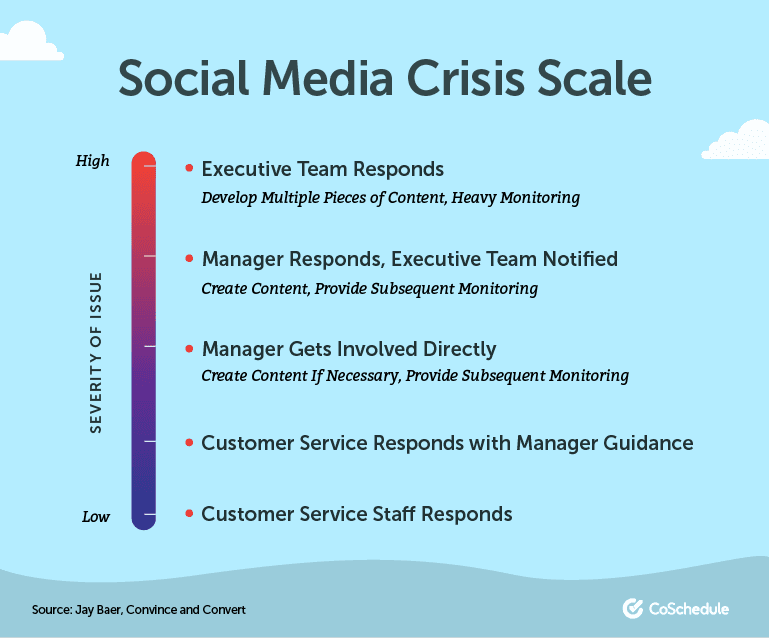 You can create something similar by establishing five levels of issue severity:
You can create something similar by establishing five levels of issue severity:
- Customer service question: Routine inquiries that your customer support team can answer.
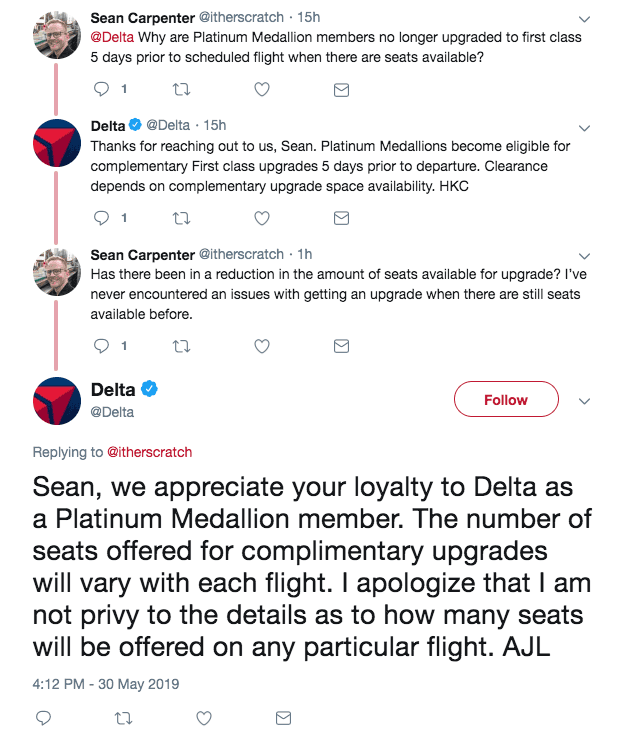
- An angry customer: More than just a question, this person is actively upset. Allow customer service or PR to respond, with a manager’s guidance.
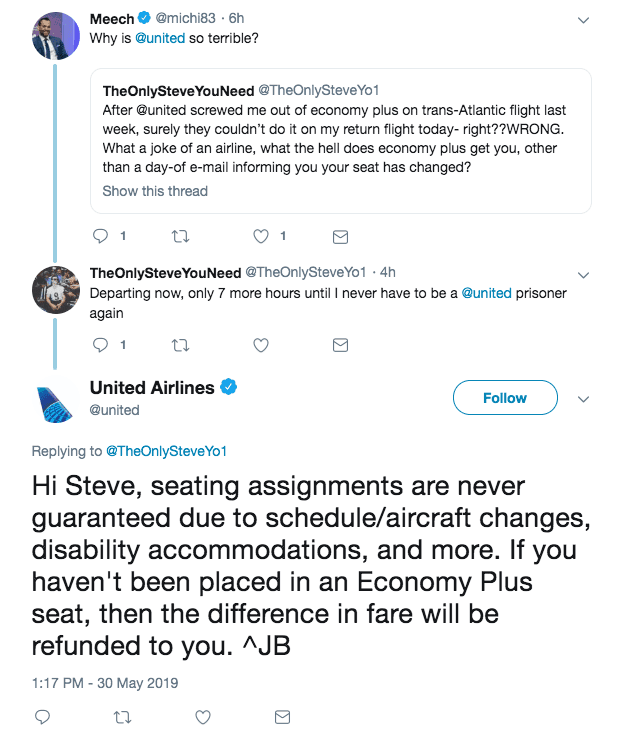
- Several angry customers: If you have several (let’s say ten or more) customers complaining about the same issue in the space of an hour, get a customer service manager or PR specialist directly on the appropriate social channel.
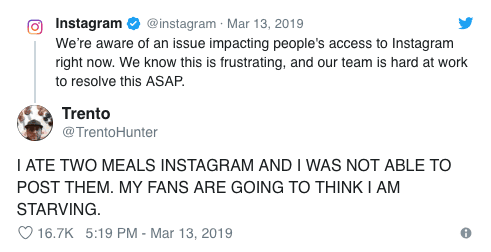
- Something terrible just happened: In the event of a major news catastrophe, shut down all scheduled social media posts. If there’s a serious defect with a product, your service is down, or something similar, consider creating content answering common questions. Get senior-level managers, PR, or marketing and the C-Suite involved. Issue statements, apologies, etc.
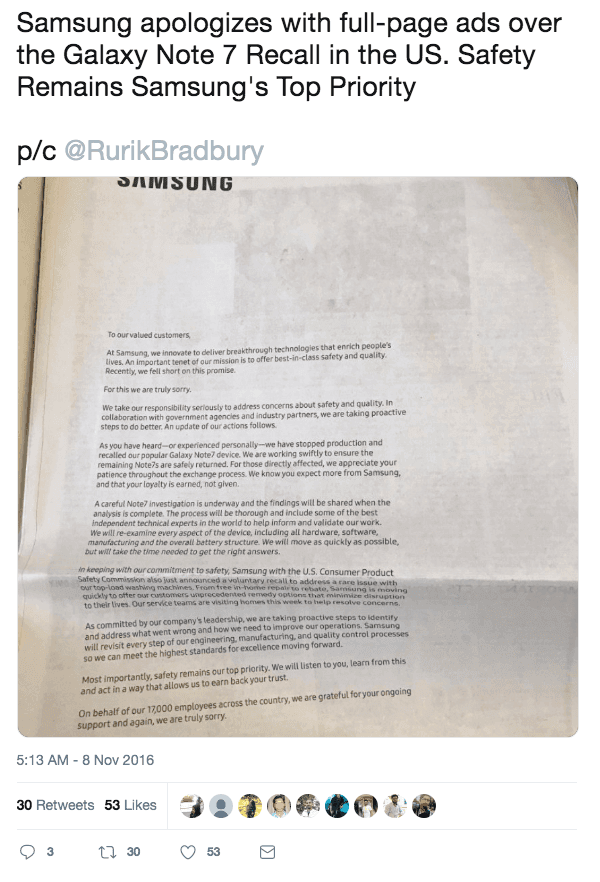
- Your brand is serious jeopardy: There's been a misstep in communication and something was handled poorly resulting in lawsuits, public backlash, and boycotting. Consider getting a statement from your CEO, or reissuing an apology and admitting your mistakes. Involve your senior-level managers, customer service, PR, and marketing staff and monitor the situation closely.
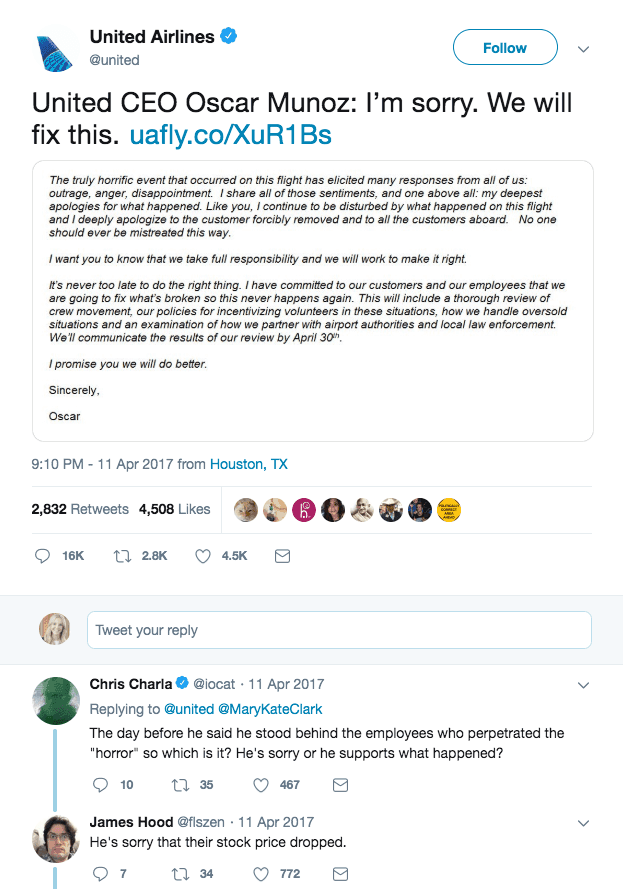 Here are some examples of situations that would fit each level:
Here are some examples of situations that would fit each level:
- Crisis Level 1: Isolated customer complaints and questions.
- Crisis Level 2: Angry customers, broken links, posts directing to the wrong page, factual inaccuracies, major misspellings on social posts.
- Crisis Level 3: High volume of angry customers, service outages, lack of product availability.
- Crisis Level 4: Product recalls, defective services or products, widespread negative press coverage, layoffs.
- Crisis Level 5: Lawsuits, serious accidents resulting in injury, illegal employee conduct.
Here's how to identify a social media crisis using a five-point scale
Click To TweetIdentifying a Crisis Using Social Listening
Now you know what a crisis looks like. Next, let’s walk through how to spot them as they happen. One of the worst things you can say in a crisis is nothing. So, make sure you’re monitoring what’s being said about your brand is essential for responding promptly. The best way to do this is with social listening. The good news is, you can do this with CoSchedule. You no longer have to have your social message scheduling separate from your social media conversations. Here's how it works:Why should brands use CoSchedule's new social listening feature to spot a crisis before it spreads?
Click To TweetHow Can I Tell My Brand Has a Problem?
Follow these two steps:- Keep an eye on your brand mentions. Check in periodically and use email alerts to stay on top of discussions as they happen.
- Use your crisis scale to assess problems. Then, respond accordingly.
- Less than five negative mentions per hour: Continue monitoring closely. Compile a report for senior management to review at the end of the day.
- More than five negative mentions per hour: Begin assigning messages to the public relations manager in Hootsuite.
- More than 10 negative mentions per hour, for more than three consecutive hours: Contact the CMO on her cell phone, and begin officially rolling out the social media crisis management plan.
Develop a Plan Before a Crisis Happens
Prevention is the best medicine. Short of that, having a plan in place before things go haywire is the next best option. Here are four things to prepare and keep on hand in case of emergency.Establish a Crisis Chain of Command
Using your crisis scale, establish who is responsible for managing the response at each level. It might look something like this: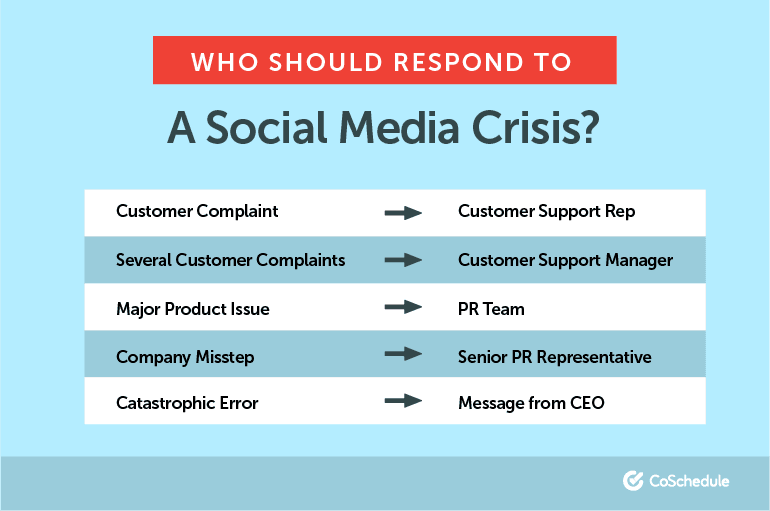
Develop an Internal Response Protocol
Your employees likely have their own social media accounts. When disaster strikes, they may not know what they can (and can’t) say about the issue publically. So, it’s important to make sure they don’t go rogue or leak information you don’t want to be released. This could make a bad situation worse. Get in front of this with a documented response plan. If a crisis reaches a level 4 or higher, do the following:- Send an internal email alerting everyone about the situation. When a problem reaches this stage, people need to know. They should hear about it from their own company before family, friends, or strangers start asking.
- Provide messaging they can share. They might get asked questions. Either create copy-and-paste messaging they can share or a link to a page they can direct people toward. This will help keep your message consistent and take the pressure off team members to respond (who might not know what to say otherwise).
- Keep your company up to date. Continue to keep the flow of information open.
- Let everyone internally know when the issue is resolved.
Secure Social Media Login Credentials
This is important for two reasons:- If your crisis is the result of a hack, you’ll want to change your passwords. You may want to consider changing login email addresses and usernames, too.
- If you need to remove something or stop automated posts, it’s important that all authorized staff know where to find the login info. The last thing you need is to have your PR and social teams scrambling to find the Twitter password because the manager is on vacation.
Social media crisis management tip: Keep passwords secured and stored somewhere team members can access them.
Click To TweetCraft Emergency Response Messaging Templates
When a mistake happens, you may not have time to issue a detailed response right away. However, you’ll need to say something to acknowledge you’re aware of the issue before things get out of hand. Plus, for routine inquiries, it can save time to have messaging ready to help you respond promptly. You don’t need to be beholden to your templates, either. Keep them flexible enough that they can be edited to fit the given situation (and make sure they actually make sense before posting). Here are some copy-and-paste examples you can use. Example 1:Hi [USERNAME], We’re sorry to hear you’ve been experiencing [INSERT PROBLEM]. Our customers expect and deserve better from us. Could you send us a DM with more details?Example 2:
This sounds frustrating! Please accept our apologies, we should have resolved [INSERT PROBLEM] before it disrupted your day. Please call us at [INSERT NUMBER] and we’ll take care of this right away.Example 3:
We’re extremely sorry to learn [INSERT PROBLEM] has been happening. Fortunately, we do have a solution that should help. Check out [INSERT URL] to find the next steps you should take. If there’s anything else we can do, let us know!Templates like this can help resolve routine inquiries fast. However, be cautious of overusing the same messaging too frequently. It can come across impersonal (though, really, most people will be okay with that as long as their problem gets fixed). If your problem is more than just a customer complaint, though, you’ll need to go into full-on crisis mode.
Caught in full-on social media crisis mode? Here's what to do.
Click To TweetExecuting Your Social Media Crisis Plan
This is where the rubber meets the road. Where heroes are made. Where … well, enough cliches. When something bad goes down, it’s time to spring into action. Instead of wildly scrambling and just doing … stuff, that seems like it might be helpful, follow these steps (and keep your thinking straight).Stay Calm
Overreacting or moving too fast will make more mistakes, more likely. Keep your head on your shoulders and do your best not to lose control of the situation.Evaluate Severity
Refer back to your crisis scale. Is the situation really as pressing as it feels?If Necessary, Pause All Social Media Automation
If there’s a major news story breaking about a national catastrophe, you may want to put your promo posts on hold. It’ll help you avoid appearing to be in bad taste. Use Pause Social Messages in CoSchedule to put every post on every network temporarily on hold. Step 1: Go into Calendar Settings and find Pause Social Messages:
Step 2: Think carefully to make sure this is what you want to do. Then, click the button shown below:
Step 3: Type PAUSE into the confirmation box (we want to make absolutely sure this is what you want to do).
Step 1: Go into Calendar Settings and find Pause Social Messages:
Step 2: Think carefully to make sure this is what you want to do. Then, click the button shown below:
Step 3: Type PAUSE into the confirmation box (we want to make absolutely sure this is what you want to do).
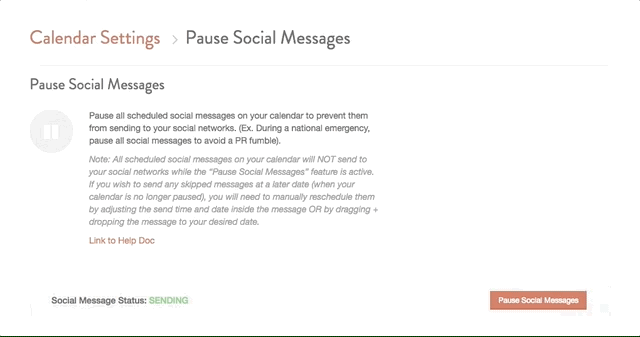 Now, all your automated social posts in CoSchedule are paused:
Now, all your automated social posts in CoSchedule are paused:

Identify Who Will Handle Responses
Don’t try to be a hero if it really isn’t your job to handle responses directly. Communicate amongst your team to make sure everyone is on the same page and knows who is handling what. Then, stay in your lane.Respond Promptly
A fast way to make a problem worse is to not respond. Ever have a problem at a store and wait 20 minutes for someone working to come help? Or get put on hold on the phone for an hour, just to get told no one can solve your problem? Yeah. Same. Social media isn’t any different. If you get a flurry of legitimate complaints at 7 pm on a Friday and don’t respond until 10:30 am on Monday, no one is going to be happy. Even if you successfully resolve the issue, people will remember wasting their weekend feeling upset more than anything else. In fact, according to Forbes, 30 minutes or less is the average response time to a complaint. Here’s what Ray Kemper from the agency Televerde said on the topic:Respond ASAP, but in 30 minutes or less is average. Your social marketing manager should have a problem-resolution team across multiple departments that is on point for quick resolution. Even if you don't have the answer, a quick reply that drives the conversation to a phone call can quickly change the conversation to a positive one. - Ray Kemper, TeleverdeNow, if you’re a small organization, you may not be able to monitor social media 24/7. In these cases, people may be more likely understand. Do the best you can (but, like, legitimately do the best you can). For larger companies though, consider the following:
- Have someone paying attention over the weekend and after normal business hours. Problems don’t just happen between 9 am and 5 pm, Monday through Friday. Staff customer support on social media at night and on weekends, and treat those people well.
- Create dedicated customer service social channels. Having a Twitter account that’s clearly labeled “customer support” can make it easier for people to know where to direct complaints. You could even add the hours you’re active on the channel in the bio. This way, you can set expectations for how soon people can expect a response (so they know you’re not ignoring them).
Respond to EVERY Message
Don’t let anyone feel left out, and make sure you respond to each message on the network where it appears.Give People Space to Air Their Grievances
There’s no sense in arguing with people, especially not when your brand is honestly at fault. Even if you’re not to blame, your company will almost assuredly look worse as a result. It sends the message that if other people have a problem or complaint, you’d rather fight than help. And that’s just asking for trouble. Instead, do this:- Give people space to air their frustrations. They’ll cool off eventually (unless the issue is extremely severe, in which case, your organization has bigger problems to solve).
- Don’t delete any responses. Let the complaints (and your responses) stand.
- Limit responses to two on social media. After that, offer to take the conversation off social media, or move to a private channel (like Twitter DMs or somewhere better suited to having an ongoing conversation, if necessary).
Consider Creating an FAQ Page or Blog Post With More Details
If you’re getting a high volume of questions or complaints around a handful of the same points, make a webpage or a post that addresses them. That way, you have one place to direct questions, and can keep your response consistent. It doesn’t necessarily need to be too in-depth, so long as it’s useful. Make sure it covers the following points:- What happened. Offer a clear description of the issue.
- What you’re doing about it. Whether you’re currently investigating a solution, or have next steps people can take, make sure that is made clear.
- Provide additional contact information. Things like public phone numbers, online support channels, and more are good to include.
- Apologize. Sincerely. Profusely. People can smell a fake, so be sorry, and mean it.
Evaluate What Happened After the Dust Settles
Once the crisis passes, it’s time to take stock of what happened. As an organization, ask yourselves:- What happened: Even if you’d sooner rather forget.
- Why did this happen: Be honest and keep emotions out of it.
- How can we prevent this from happening again: If the crisis stung enough, you’ll do whatever’s necessary to stop it from happening again.
Get a Damage Report
Hopefully, you’ve managed to rectify the situation without causing major damage to your brand. But, even if the best of circumstances, two things are likely:- Engagement probably went up. Unfortunately, because a lot of people complained.
- Other metrics probably went down. Followers may have decreased (and if they increased, it was probably just to watch the trainwreck).
- Traffic. Does a drop in traffic correlate with a drop in followers? Does an increase in traffic correlate with people going to your site to learn more about what happened? Avoid the idea that more = better.
- Follower Counts: In the case of a severe crisis, large drops are possible.
- Engagement: If some time has passed since the crisis happened, and engagement is still down, there could be some lingering negative brand sentiment going around.
How to Prevent Problems Before They Happen
You can’t always control a crisis. But, you can do yourself some favors, and put preventative measures in place.Put a Social Media Policy in Place
Sometimes people make mistakes. Sometimes, those mistakes would have been preventable had they used a little common sense. Other times, they may not have known what is or isn’t acceptable social media use as it pertains to your brand. Developing a clear social media policy can help make your company’s expectations clear. Employees can’t say they didn’t know something was unacceptable if the guidelines were given to them in writing. Follow these steps:- Read this post on creating a documented social media policy. Then, follow the steps to create one (there’s a template included to make the process quick and easy).
- Have everyone review it. You don’t need to make a big deal out of it. But, it’s advisable to provide it to all new hires, and make sure all current team members take a look.
- Store it somewhere your team can access it. Google Drive and Dropbox are good options, using a shared folder.
Be Aware of Current Events
Too often, companies get in trouble because they used a hashtag inappropriately, without knowing what it actually meant. Or, they’ll post something about their latest deals, at the same time as a national tragedy getting tons of news coverage. As a marketer, you should be staying reasonably aware of current events, culture, and trends. Even if you’re already reading blogs, staying on top of news, and tracking hashtags, you might feel like there’s more you can be doing. Here are a few ideas:- Use Feedly to monitor the news. Read a wide number of diverse sources, and don’t limit yourself to things in your industry.
- Be active on social media. Not just as a marketer, but as an individual. This will give you first-hand knowledge of what’s trending on social in the broad sense, and not just what people are saying in your industry.
- Avoid hot button issues. Unless your brand is inherently political or socially active, it might be best to avoid controversial political and social issues entirely.
Feel Like a Crisis Management Expert?
You now have all the info you need to handle a social media disaster. Although we hope you never have to put your plan into practice, it’s always best to be prepared. Let’s recap what you’ve read:- First, we walked through how to identify a crisis (versus routine questions and complaints).
- Then, we outlined the steps you’ll need to take before, during, and after a social media crisis.
- Finally, we touched on how to prevent problems from starting in the first place (or, at the very least, how to avoid disasters of your own making).
